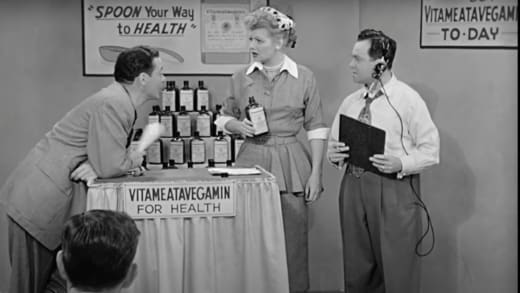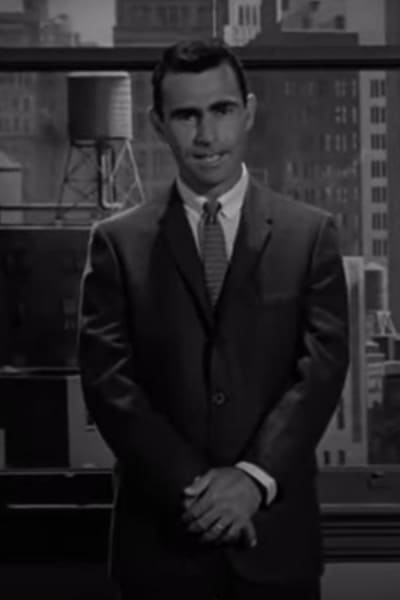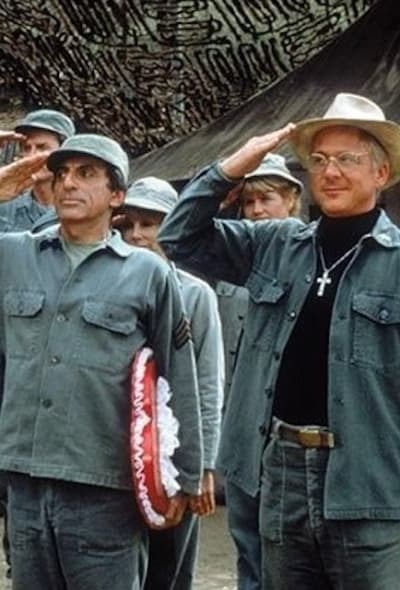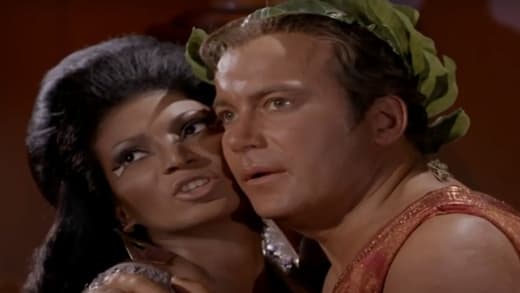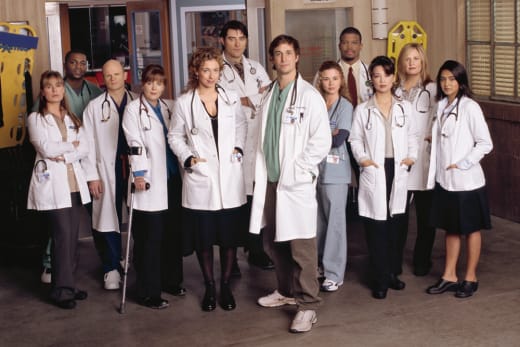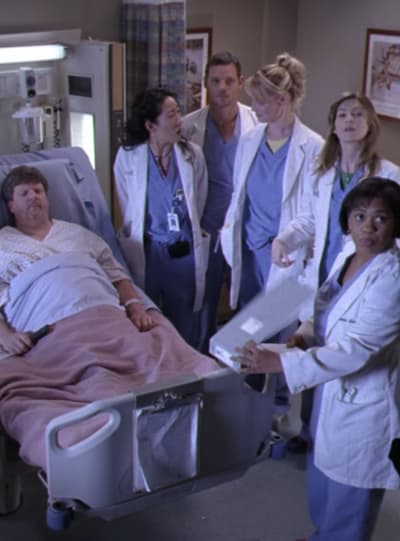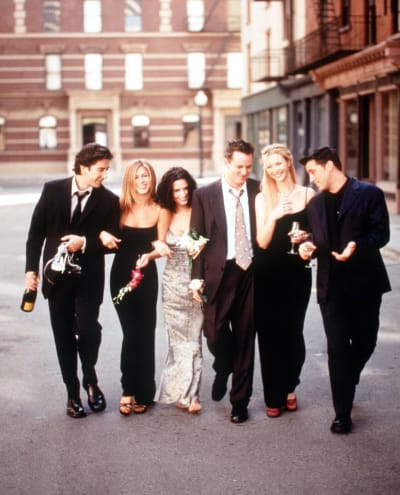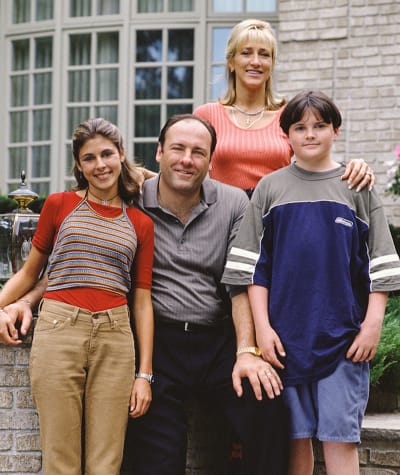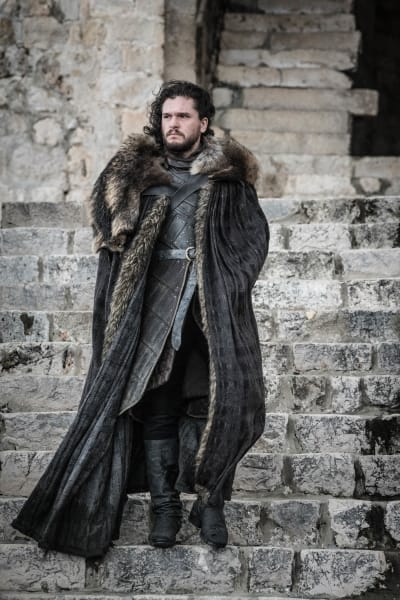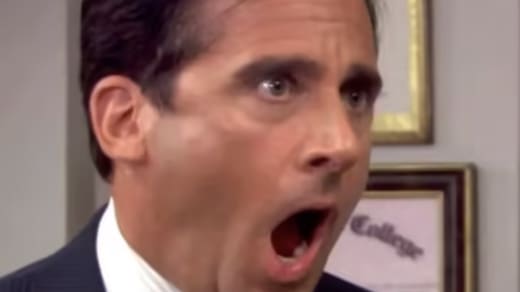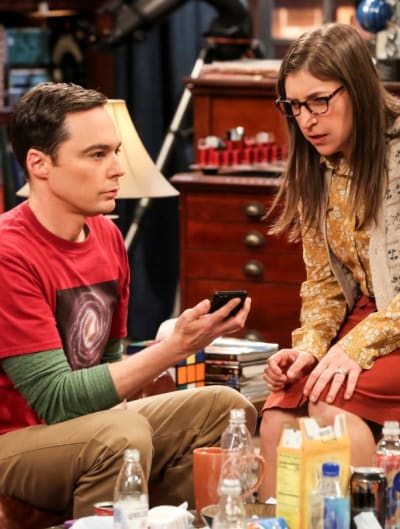Some television shows seem to disappear almost the second they first air, while others have reasonably solid runs, but then they fade into obscurity.
Then there are the shows that smash records, revolutionize genres, give us moments we remember for decades, or otherwise achieve unprecedented success.
Here are 17 of those incredible shows.
I Love Lucy (1951-1957)
I Love Lucy was pioneering in many ways. It featured an interracial couple married in real life, Lucille Ball and Desi Arnaz, and Lucy’s unique brand of physical humor drew everyone in.
Iconic moments from the CBS show, like Season 1 Episode 30: Lucy Does a TV Commercial, also called the Vitameatavegimen episode, have become permanent parts of American culture.
Related: Classic TV is the Perfect Binge Watch for So Many Reasons
We all remember seeing that and other remarkable moments like Lucy working at a candy factory, stomping grapes, or giving birth to Ricky.
The latter episode was viewed by more than 70 percent of households across the country when it first aired and has been viewed many times since in reruns.
The three-camera filming method used to record the show completely changed how later sitcoms were filmed and made the reruns we take for granted today possible.
The Twilight Zone (1959-1964)
The Twilight Zone premiered 65 years ago, and many still consider it the best show ever. Why? Well, take your pick as far as reasons. It had them all.
Social commentaries, plot twists, scary special effects, and the show’s ability to keep everyone guessing quickly reeled in viewers.
Then there was Rod Serling, who hosted the show with his perfectly creepy commentary, always letting us know we were crossing into the Twilight Zone.
Reruns have allowed ’80s kids like myself and others to continue getting reeled in just as quickly over the years, showing how exciting and innovative the show was.
Another thing that made the series great is that shows of the period and since have often stayed firmly in their genre lanes, but The Twilight Zone blended many genres.
The unprecedented success of the original series also bled into other parts of our culture over the years, such as the Disney Tower of Terror rides based on the show.
M*A*S*H (1972-1983)
Who would think the exploits of military characters working at a MASH (Mobile Army Surgical Hospital) would work as a half-hour sitcom at all, never mind for eleven seasons and 251 episodes?
Yet, M*A*S*H surprised everyone, even setting a series finale viewing record of 105.97 million viewers that will likely never be broken, especially with the number of channels and apps available today.
Related: 11 Series Finales That Hit Us Right In The Feels
The show was oddly fun despite being set at a MASH (Mobile Army Surgical Hospital) during the Korean War, and it was written so that seriousness and humor were somehow always in perfect balance.
A big reason for the success of M*AS*H was its release timing because the show was about the Korean War, but it started airing during the Vietnam War (1955-1975) when pro-war and anti-war sentiments were splitting the country.
From the comical Klinger (Jamie Farr), who routinely dressed in women’s clothes and attempted to get kicked out of the army, to the more serious Colonel Potter (Harry Morgan), someone seemed to represent almost every possible war-related situation or sentiment.
Star Trek (1966-1969)
Star Trek: The Original Series (TOS) lasted only three seasons, during which it won two Emmy Awards and was nominated for a total of 15, which was unprecedented for a genre series back then.
It’s not so much TOS’s success that puts it on this list, though, as the fact that it successfully launched an entire ever-expanding franchise still loved by fans like myself nearly 60 years later.
Related: Is Strange New Worlds the Most Innovative Star Trek Series Since the Original?
The many shows in the franchise that have come since, including The Next Generation, Enterprise, and Discovery, wouldn’t exist without it, and neither would the many Star Trek movies.
Of course, TOS included some monumental episodes and set some pretty incredible records, running in syndication continuously from 1969 until 1994.
Most TOS cast members are gone now, but their legacies still live long and prosper in reruns, new Star Trek shows, and international conventions frequented by devoted fans.
Cheers (1982-1993)
Songwriters Judy Hart and Gary Portnoy wrote the iconic theme song for Cheers.
The song talks about going to a place where everyone knows your name and has similar troubles, and it perfectly sums up the success of Cheers.
We all wanted to go to the fictional Boston-based bar, and some really can because the show was based on the Bull & Finch Pub on Beacon Hill, which is still open as of 2024.
The writing for Cheers was excellent, but the primary factor in the show’s success was the ensemble of amazing actors, much like on M*A*S*H.
They brought all types of humanity straight into the bar each week for us to see, skyrocketing the show to success and even leading to spinoffs, two of which (Wings and Frasier) were also hits.
From the high-strung Rebecca Howe (the late Kirstie Alley) to the likable trivia-spouting Cliff Clavin (John Ratzenberger), there were always characters, stories, and scenarios that were wacky yet relatable to enjoy on Cheers.
Dallas (1978-1991)
Dallas was not just a soap opera but a cultural phenomenon.
It had everything we could ever want, from excellent on-location filming in Dallas, Texas, to conflicts, intrigue, and, like these sexy soap opera couples, a good amount of romance.
But if Dallas itself were a person, its nickname would have to be King Cliffhanger because the series started it all, as far as end-of-season cliffhangers go.
Related: Cliffhangers That Made Our Jaws Drop to the Floor
The first couple of seasons of the show were already successful, but season three shot Dallas’ ratings through the roof.
Specifically, the last episode of the season caused everyone around the country to wonder who shot oil magnate J.R. Ewing (Larry Hagman).
Dallas’s success also heavily influenced the production of several other shows during and after its initial run, including Falcon Crest and Dynasty, before leading to a 2012-2014 Dallas reboot on TNT.
Charlie’s Angels (1976-1981)
Charlie’s Angels was a show about three female police academy graduates who, in the opening credits, got the short end of the assignment stick and were “rescued” from crossing guard and paperwork duty by the mysterious Charlie, who made them private investigators.
There are some fantastic single TV detectives and even plenty of mystery-solving TV couples, but the trio of Charlie’s Angels took things to the next level.
The most famous angel by far was Jill Munroe, played by ’70s icon Farrah Fawcett in season and appearing sporadically in later seasons.
There were 12 million copies of a poster of her wearing a red swimsuit sold in 1976 when she was a regular on the series during its first season.
After season one, Farrah left except for occasional guest spots. Still, people were invested in the show by then.
They started to realize the show wasn’t just about watching pretty women but also about the empowerment of women at a time when that wasn’t common, opening doors for other shows starring female leads to follow.
The Simpsons (1989-Present)
D’oh! We can’t talk about the unprecedented success of TV programs without mentioning The Simpsons, which currently holds numerous records, including the longest-running American animated program in history.
The show about working-class American life is more than relatable. Thanks to its memorable catchphrases, guest stars, and humorous moments, it’s also incredibly intertwined with our culture.
Related: 19 Best TV Character Catchphrases
Among many other awards and accolades, TV Guide named it the greatest TV cartoon of all time in 2013.
Many of us can recognize quotes or plot references from The Simpsons easily, and those who can’t can typically at least name the characters because, even without watching the show itself, we are exposed to it constantly as a culture.
The humor and constant pop culture references on The Simpsons launched an entire satirical animation genre, paving the way for shows like South Park and Family Guy, which are also significant parts of American pop culture now.
ER (1994-2009)
Before ER, many American TV shows had medical themes, from City Hospital (1951-1953) to Doogie Howser, M.D. (1989-1993).
The difference was that most previous medical shows didn’t take themselves as seriously as ER, which approached the subject of day-to-day hospital operations with incredible realism.
ER’s success was partially due to how it was filmed. It often used a documentary style that made us feel like we were in the emergency room with the doctors.
If the cinematography and the realism weren’t enough, then we had the diverse and multi-talented cast, which initially included greats like George Clooney, Noah Wylie, and Eriq La Salle.
Granted, the cast changed over time, but each new actor brought a unique character to the ongoing storyline, another reason we all stayed invested for the long haul.
When Hulu started carrying it in 2022, 35,000 people binge-watched it within the first two months, which isn’t surprising considering it was the most-watched show in North America at one point during its initial run.
Grey’s Anatomy (2005-Present)
ER was record-setting, remaining the longest-running medical drama in American history for years, but that was before Grey’s Anatomy snatched the title away from it in 2019.
The show is still going strong, with ABC announcing that Grey’s Anatomy Season 21 will be released in the fall of 2024.
Related: Grey’s Anatomy Season 21: Cast & Character Guide
Grey’s has many of ER’s outstanding elements, including cast diversity and realism. It also highlights many empowered female characters, such as Meredith Grey (Ellen Pompeo) and Miranda Bailey (Chandra Wilson).
Another big reason for the show’s continued success is that streaming services have helped it find new audiences in recent years.
It has been on for so long that entire families are now getting hooked on it together because parents saw it from the beginning, and teenagers can binge-watch to catch up to them.
Friends (1994-2004)
Have you ever had a bad day, week, month, or year? If so, you can always lean on your friends.
That was the lesson we learned from Friends and its iconic theme song, “I’ll Be There For You,” written by Marta Kauffman, David Crane, Allee Willis, and Michael Skloff and performed by The Rembrandts.
Friends is such a cultural phenomenon today that the world practically stopped spinning when Matthew Perry, who played Chandler Bing, unexpectedly passed away in 2023.
The series is like comfort food because we can all relate to its six core characters on some level, whether we’re klutzy and quirky, neurotic, clean freaks, unlucky in love, or just plain clueless sometimes.
We invested in the characters, but we also got to kick back and enjoy the humor, from Monica (Courteney Cox) wearing a turkey on her head at Thanksgiving to Ross (David Schwimmer) hilariously yelling “PIVOT!” as the friends try to move a couch up the stairs.
Friends won many awards, including Primetime Emmys, Golden Globe, People’s Choice, and Teen Choice awards, and its popularity shows no signs of letting up thanks to younger audiences newly discovering it and those of us who were there when it started rewatching it frequently.
The West Wing (1999-2006)
This series about the inner workings of the White House with a stellar cast headed by Martin Sheen as fictional POTUS Jed Bartlet captured everyone’s attention when it premiered, which happened to be during my senior year of high school.
For the first time, many of us found ourselves interested in how the country was run, and many wound up in political or public service careers after being influenced by The West Wing.
Related: 15 TV Characters Who Should Never Run For President
A cinematic filming style that revolutionized network TV filming techniques at the time helped propel it to popularity, along with the rapid-fire dialog delivery that became one of the show’s signatures.
Its success was also helped by its relevance to the time because it often incorporated storylines about contemporary political issues.
All of that was great, but it still would have been dull without the brilliantly injected humor throughout the series, which helped give the characters depth and keep us riveted to our screens.
The Sopranos (1999-2007)
While The West Wing took off on network television, The Sopranos took cable television by storm.
Much like The West Wing, it did so with excellent writing and brilliant filming techniques and is often credited with ushering in a new Golden Age of home entertainment.
One of the biggest reasons for the success of The Sopranos was Tony Soprano himself (the late James Gandolfini).
Tony Soprano was a horrible human being, but the combination of writing and acting made him magnetic to watch.
Between Tony being one of the earliest TV protagonist antiheroes and the series’ generally dark and complex plots, the award-winning show completely changed opinions about what drama TV could be.
Game of Thrones (2011-2019)
Game of Thrones is one of the most wildly successful fantasy series ever, and surprisingly, it quickly attracted an even broader audience.
It broke down walls between fantasy/sci-fi fans and fans of other genres and led to some extreme obsessions on the parts of fans, some of whom even had GoT-themed weddings.
Related: Game of Thrones Fans Are Still Divided Over These Controversial Storylines
By its fourth season, it averaged 16.1 million viewers and had passed The Sopranos as the most-watched series on HBO.
George R. R. Martin’s “A Song of Ice and Fire” novel series inspired the show, which centered on the power struggles of families battling for control of Westeros and the Iron Throne.
It was a relentless series of immersive experiences with sweeping visuals, stunning costumes, and well-developed characters, including several influential and monumental TV episodes.
Breaking Bad (2008-2013)
Breaking Bad is the tale of Walter White’s (Bryan Cranston) conversion from family man and high school chemistry teacher to drug kingpin for the simple reason that he wanted his family to be financially stable after receiving a cancer diagnosis.
Watching a good man slide into the world of drug production and distribution and lose his moral character along the way was like watching a train wreck or car accident. Nobody could look away.
That’s probably the biggest reason for the show’s incredible success, which included winning 16 Primetime Emmy awards.
Although it ended nearly a decade ago, it is still popular today and, unfortunately, still relevant.
The U.S. healthcare system still leaves much to be desired, and the drug trade is still going strong, making this dark HBO drama intriguing because its premise is still so plausible.
The Office (2005-2013)
A big attraction point for The Office was its mockumentary style, which often made it seem less like watching a TV show and more like watching friends or family members interact with each other.
The often off-the-wall comedy show based on the U.K. series of the same name also starred many actors who excelled at improvisational comedy, including Steve Carell, Jenna Fischer, and Rainn Wilson.
Related: Why We Need More Mockumentary-Style Shows Like The Office & Modern Family
It was a show about a bunch of office workers at a paper company, which sounds incredibly dull, but it quickly blew that theory out of the water.
The running gags, awkward moments, and relatable situations make the show fun to watch over and over and one that almost anyone can relate to.
The Big Bang Theory (2007-2019)
It all started with a big bang, which wasn’t exactly true for The Big Bang Theory, a show about a bunch of geeky scientists coping with daily life.
Season one started with more of a slight fizzle, especially since it was interrupted and shortened by a writer’s strike, but then it started to gain viewers like a ball rolling faster and faster down a hill.
The country’s obsession with the quirky Sheldon Cooper (Jim Parsons) and his friends took off, and merchandising, comic con appearances, and interviews with the cast exploded.
The introduction of Bernadette (Melissa Rausch) and Amy (Mayim Bialik) in the third season allowed the guys to date more, which sucked viewers in, and Parsons winning the first of several Emmy Awards that season was the icing on the cake.
Suddenly, the show was flying high, attracting many guest stars, winning many more awards, and getting permanently cemented in everyone’s brains.
Those were 17 of the most successful shows ever to air, but we’re sure there have been more great ones.
What are your picks for the shows that achieved unprecedented success?
Were they on this list or not?
Tell us about them in our comments section below.
Jessica Kosinski is a staff writer for TV Fanatic. You can follow her on X.

